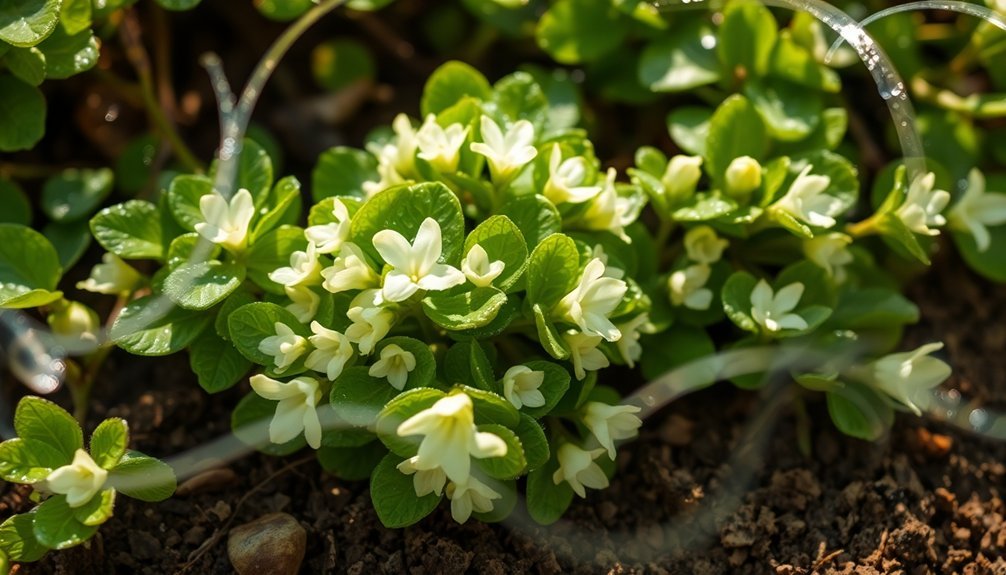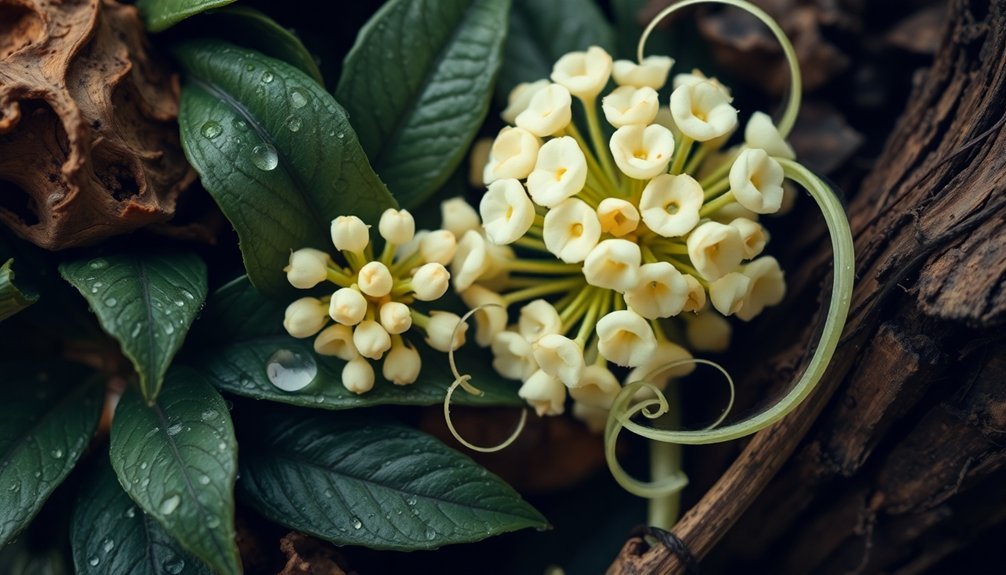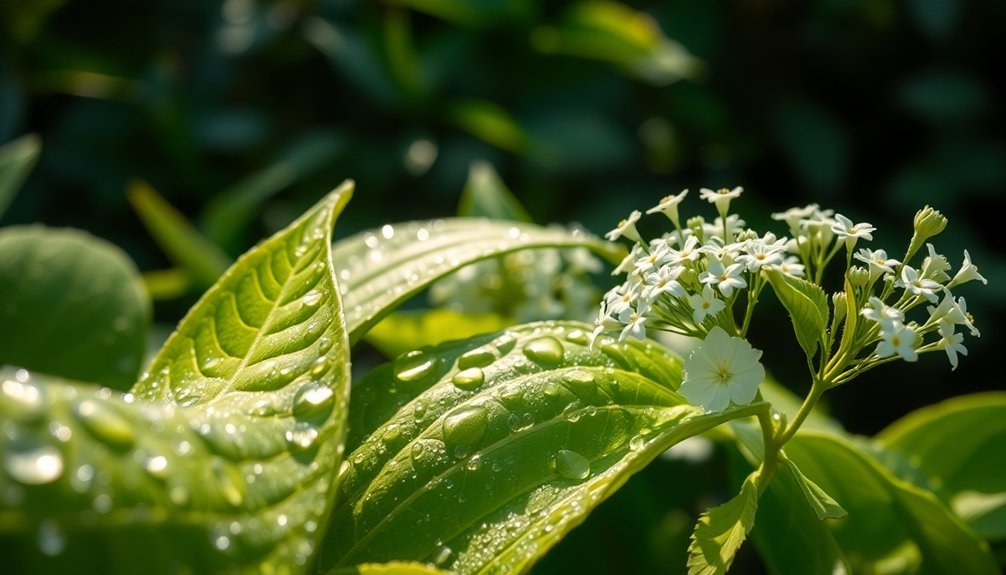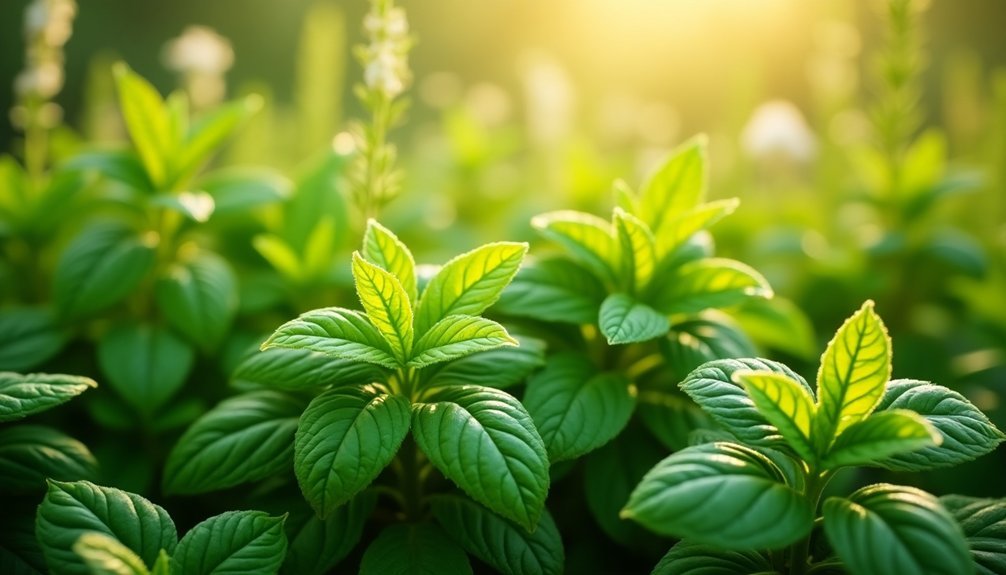Plant-based musk notes provide you with a sustainable, cruelty-free alternative to traditional animal musks. You'll find these natural scents in sources like ambrette seeds, musk flowers, and garden angelica, each offering unique profiles from sweet and woody to powdery and fresh. They're ideal for DIY perfumery and sensitive skin, requiring specific cultivation and extraction methods. Modern processing techniques and growing sustainability trends have made botanical musks more accessible than ever before. There's a whole aromatic world of plant-derived musks waiting to be discovered.
The Origins of Plant-Based Musk

While animal-derived musk has dominated perfumery for centuries, plant-based alternatives have an equally rich history dating back to ancient civilizations.
You'll find that cultures in China, India, and Egypt pioneered the use of plants to create musk-like fragrances, establishing fundamental techniques still relevant today.
The shift toward plant-based musks gained significant momentum in the late 19th century when hunting musk deer became illegal.
This change wasn't just about legality – it reflected growing concerns about conservation and ethical sourcing.
You'll discover that these early innovators recognized the sustainability benefits of plant-based alternatives, setting the stage for modern perfumery practices.
Their work laid the groundwork for today's diverse range of plant-derived musk notes, offering perfumers sustainable and cruelty-free options.
Modern perfumers have embraced white musks as standard alternatives, providing consistent and ethically-sourced fragrance options.
Cultivating Ambrette Seeds for Natural Musk
If you're planning to grow ambrette for its valuable musk-like seeds, you'll need to provide meticulous care in a tropical climate where the plant can reach heights of up to 3.5 meters.
You must prepare well-drained soil and maintain consistent weeding to prevent competing plants from overwhelming your ambrette crop.
The critical harvest window spans from late May through August, when you'll need to hand-pick the ripened brown pods before carefully drying the snail-shaped seeds within. Be prepared to protect your crop from hungry parakeets during the harvest period.
Growing Requirements and Climate
Since ambrette plants thrive in tropical and subtropical regions, you'll need to provide specific growing conditions to secure successful cultivation.
The plant requires 1000-1400mm of annual rainfall and full sun exposure, as it won't grow in shaded areas.
You'll want to sow your seeds at the start of the rainy season or during early spring/late autumn. In India, March-April is ideal, though you can plant as late as early July in Central India.
Your plants will take 4-5 months to flower and fruit after sowing.
Choose well-drained soil with a pH between 6.0 and 7.8. While ambrette grows in sandy, loamy, or clay soils, make sure proper drainage to prevent waterlogging. This versatile plant typically grows as an annual undershrub reaching heights between 3 to 5 feet.
The plant can flourish from sea level up to 450 meters in elevation.
Essential Soil Preparation Steps
Before planting your ambrette seeds, proper soil preparation plays an essential role in successful germination and growth. You'll need to create a well-balanced potting mix using 60% garden soil, 20% fine sand, and 20% vermicompost. Make sure your soil is moist but not waterlogged by adding hot water until you achieve the right consistency.
| Preparation Step | Key Actions |
|---|---|
| Mix Components | Combine soil, sand, and vermicompost thoroughly |
| Moisture Level | Add hot water gradually, maintain even dampness |
| Seed Placement | Drop seeds on surface, tamp lightly |
| Environment | Create humid, warm setting with partial shade |
After preparing your container, place the seeds on top and cover them with a thin layer of dry soil using a screen. Keep your setup in a darkish, warm area and use a plastic cover to maintain humidity until germination occurs.
Proper Harvesting Timing
After your ambrette seedlings have matured, you'll need to master the timing of your harvest to capture the seeds at their peak fragrance.
The harvesting window extends from late May through August or September, with seed pods ripening gradually on each stem.
You'll know it's time to collect when the pods shift from green to brown. Since you can't harvest all pods at once, you'll need to monitor your crop continuously and pick each pod as it reaches maturity.
Watch out for parakeets, which are drawn to the ripening seeds. Due to the delicate nature of the pods and the need for precise timing, you'll need to harvest manually.
This careful approach guarantees you'll collect the highest quality seeds for processing.
Essential Processing Methods for Botanical Musk
While extracting musk-like fragrances from botanical sources requires precision, several essential processing methods can yield high-quality results.
You'll need to start with either distillation or solvent extraction, depending on your plant material. Distillation works well for ambrette seeds, while hydrocarbon solvents are effective for extracting musk-like compounds from other botanicals.
After extraction, you'll want to purify your product using techniques like rotary evaporation under diminished pressure to remove any remaining solvents.
Column chromatography can help eliminate impurities, while heating and cooling cycles refine the scent profile.
Don't skip quality control – use vapor phase chromatography to analyze your samples, and always perform sensory evaluations to guarantee your botanical musk has the desired warmth, depth, and longevity.
Different Types of Plant-Derived Musk Notes

Nature offers several remarkable sources of musk-like fragrances that rival their animal-derived counterparts.
You'll find ambrette seeds from the musk mallow plant providing a fresh, distinctive aroma that's become a popular natural musk substitute. The musk flower (Mimulus Moschatus) delivers subtle musky notes through its delicate yellow blooms, while garden angelica contributes a light, musky undertone that pairs beautifully with florals.
For a unique Australian touch, Olearia Argophylla offers subtle, floral muskiness that blends seamlessly with other botanicals.
These plant-derived musks feature varying characteristics – from sweet and woody notes to powdery and fresh qualities. You'll notice some varieties, like those from ambrette seeds, even display fruity-amber profiles that enhance a fragrance's longevity while adding complexity to the overall scent composition.
Blending Natural Musk in DIY Perfumery
Creating your own natural musk-based perfume requires understanding both the art and science of fragrance composition.
You'll want to start with quality perfumer's alcohol as your base, then carefully blend in your musk notes, which work best as base notes in the oriental aroma family.
Patchouli essential oil offers a natural musky quality that's perfect for DIY perfumery.
When blending, remember that musk pairs beautifully with leather and woody notes.
You'll need to properly dilute your essential oils and use appropriate tools like funnels for precise mixing.
While you can use your creation immediately, letting it age for at least three weeks in a cool, dark place will enhance the fragrance.
Apply your finished perfume to pulse points, and you'll enjoy your custom musk scent for up to 12 months.
Sustainable Botanical Musk Production

As manufacturers seek sustainable alternatives to animal-derived musks, botanical sources have emerged as an environmentally responsible solution.
You'll find sustainable musk compounds in various plants, including ambrette seeds, angelica root, and musk mallow, each offering unique musky undertones without harming animals or their habitats.
These botanical alternatives rely on green synthesis methods, using renewable materials and efficient purification processes.
You can expect consistent scent profiles through laboratory replication of natural musk molecules like cyclopentadecanolactone and ambrettolide.
What's more, the production of botanical musks aligns with modern sustainability practices while supporting conservation efforts.
Frequently Asked Questions
How Long Can Natural Musk Notes Last on Skin Compared to Synthetic?
You'll notice natural musk notes typically don't last as long on your skin as synthetics do. While natural musks fade within hours, synthetic versions can linger on your skin for several days.
Can Botanical Musk Trigger Allergic Reactions in Sensitive Individuals?
Yes, botanical musk can trigger allergic reactions if you're sensitive. You might experience skin irritation, rashes, itching, or respiratory issues. It's best to patch test before using products containing natural musk ingredients.
What Temperature Should Ambrette Seeds Be Stored at for Optimal Longevity?
You'll get the best longevity from ambrette seeds by storing them at -18°C. Keep them in sealed containers with around 5% moisture content. This sub-freezing temperature will greatly extend their viable storage life.
Do Different Climates Affect the Intensity of Plant-Based Musk Scents?
Yes, you'll find that climate greatly impacts musk scent intensity. Warmer regions typically produce stronger fragrances, while temperature extremes can stress plants and reduce oil production, affecting your final scent's potency.
Are There Specific Skin Types That Enhance Natural Musk Fragrances?
If you've got oily or warm skin, you'll enhance musk fragrances naturally. Your skin's natural oils help lock in and amplify the scent, while dry skin may need reapplication more frequently.
In Summary
You'll find that plant-based musk offers a sustainable and cruelty-free alternative to traditional animal musk. Whether you're working with ambrette seeds, angelica root, or other botanical sources, you've now got the knowledge to create your own natural musk blends. Remember to maintain ethical sourcing practices and careful processing methods as you explore these rich, earthy notes in your perfumery journey.





Leave a Reply